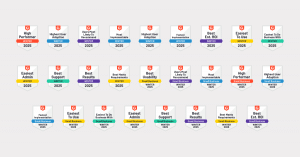It makes sense that to help manage building projects, design professionals turn to project management software. However, when it comes to large, complex projects that involve hundreds if not thousands of pieces of information, you need a way to centrally manage every piece of project-related information.
That’s where a PIM solution, otherwise known as Project Information Management solution, becomes essential.
Project Information Management is the specific way architecture and engineering firms manage and organise project data throughout its lifecycle, allowing for the collection, organisation, storage, retrieval, and distribution of information.
Let’s take a look at some of the top reasons AEC professionals need a PIM solution.
1. Centralised information management
Project information can vary from project documents, contracts, and drawings with multiple versions and revisions, to emails, RFIs, and more. PIM software provides a central location for managing this information, ensuring that it is easy to find, access, and share.
2. Improved collaboration and communication
One of the primary benefits of PIM software is that it improves collaboration and communication among project stakeholders. In a typical building design or construction project, there are many stakeholders involved, and communication is often fragmented and inefficient. PIM software provides a single platform for the project team to access project information, improving their ability to work effectively together with the right information.
3. Risk mitigation
The importance of reducing risks and errors in AEC projects cannot be overstated. Loss of communications, working with out-of-date information and drawings, miscommunications and delayed communications can all significantly impact the success of any project. And should a firm find themselves at risk of litigation, these problems can be even more devastating.
PIM software helps to dramatically reduce risk by having all information collated and stored in a central, easily accessible location. From emails and RFIs to drawing revisions, having this information purposefully and professionally organised and stored means your teams are working with the latest information at any given time, ensuring that everyone is on the same page. And in the event of litigation, having quick and easy access to every piece of information means you can easily track all changes and decisions made throughout the project lifecycle and present them as needed. It also makes it easy to identify potential risks and take corrective action before they become significant issues.
4. Regulatory compliance
By using a PIM solution to maintain a complete and accurate record of project information, businesses can demonstrate compliance with relevant regulations, standards, and requirements such as ISO19650 and other document retention policies that facilitate audits and reviews.
5. Enhanced project efficiencies
PIM software streamlines project workflows, reduces manual processes, and eliminates duplication of effort. This improves efficiency and productivity, enabling project teams to complete projects faster and with fewer errors. PIM software also automates many administrative tasks, freeing up time for project teams to focus on more critical tasks.



